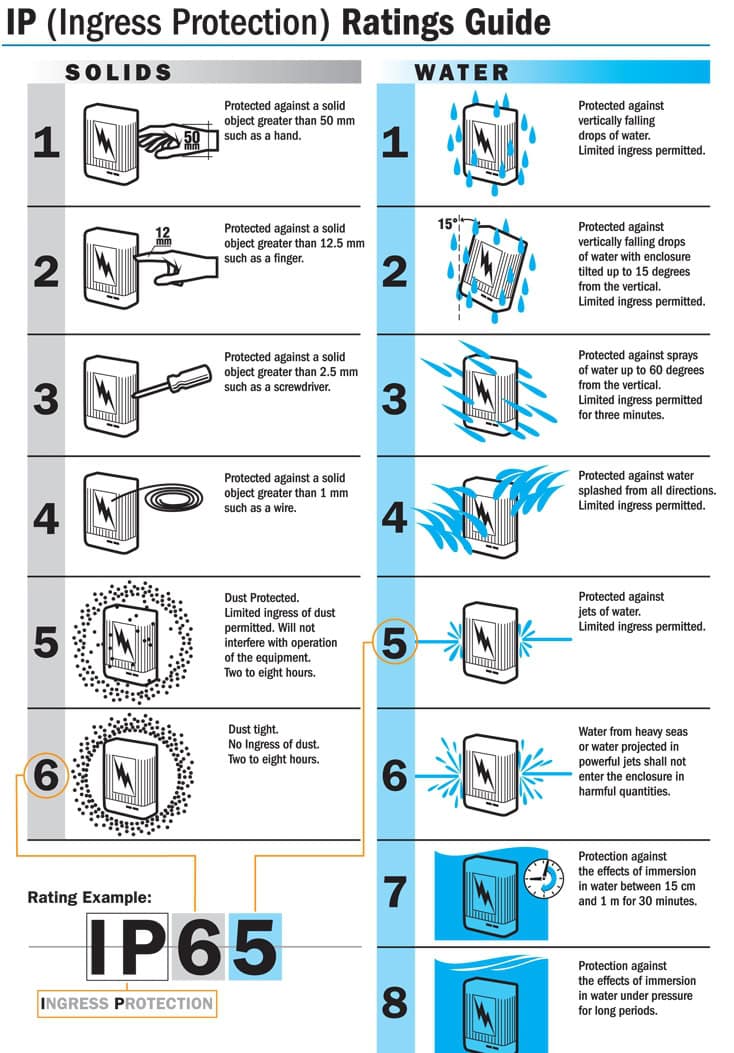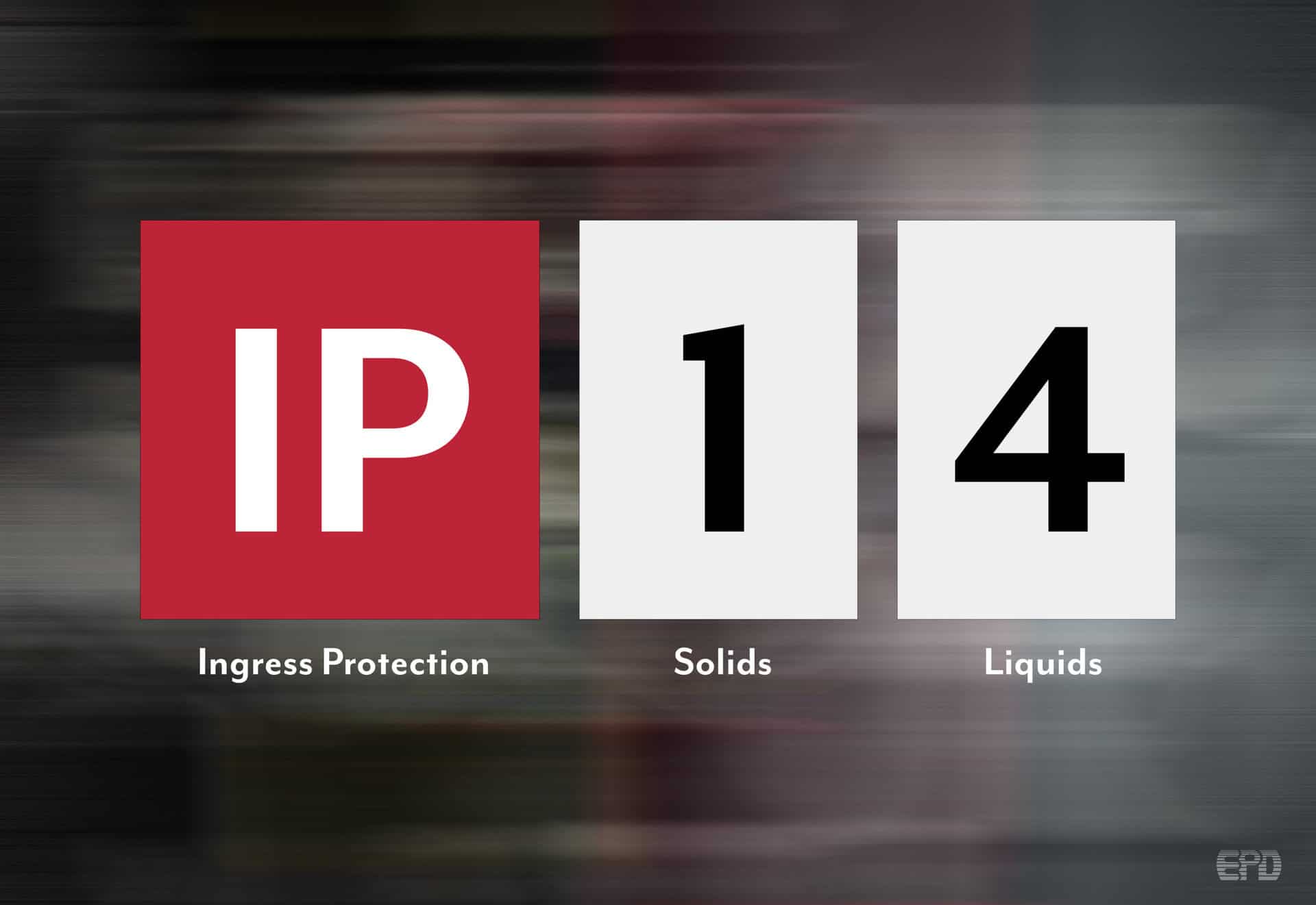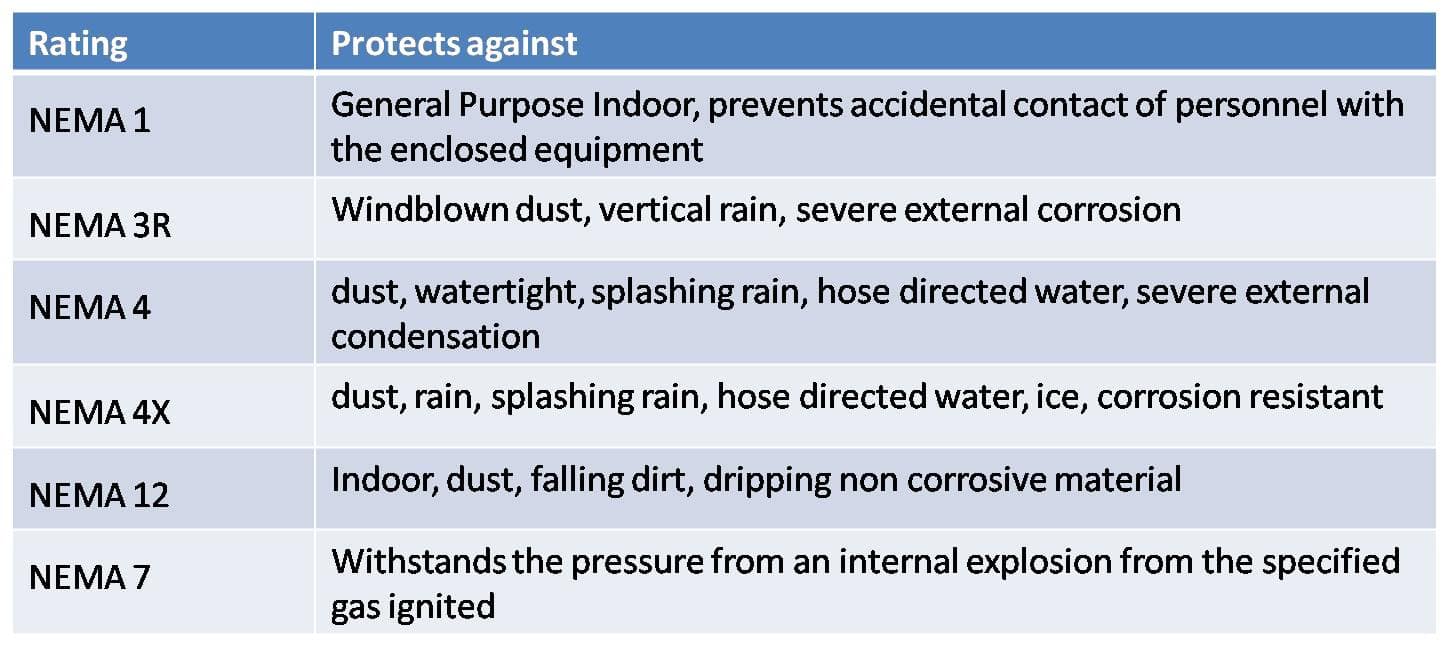Choosing the Right Switchboard Enclosure: Finding the Perfect Balance between Purpose and Design
Shielding Electronics: Navigating NEMA and IP Ratings for Switchboard Protection
Explore the world of NEMA and IP ratings for switchboards. Learn how these critical components secure switchboards in diverse environments
As we untangle the complexity of NEMA and IP classifications, we will go on a trip into the core of electrical protection. Discover why NEMA stands tall as a beacon of dependability, protecting EPD and UL-891 listed switchboards from environmental problems.
Join us in decoding the code to unrivaled security - your key to unwavering electrical defense.
Understanding Switchboard Enclosures
Switchboard enclosures serve as the first line of defense for electronic components against external factors that could jeopardize their functionality.
Exploring the Purpose and Design of Switchboard Enclosures
Switchboard enclosures are carefully engineered protective housings intended to ward off physical harm, the weather, and tampering with electrical components [1]. To ensure lifespan and dependability, the materials must be able to endure the environmental factors of the intended use.
Switchboard enclosures are used in corrosive industrial settings as well as outdoor installations subjected to different weather patterns.
So, there should be strict switchboard enclosure selection criteria as their goal is to provide safety for electronic components so they may perform as best they can in their intended surroundings.
Importance of Protective Housing for Electrical Components
Switchboard enclosures offer a regulated setting that lessens the effect of outside factors on delicate electronics. In industrial environments, where machinery and equipment are subject to vibrations and possible impacts, switchboard enclosures provide essential protective protection that is essential to the lifetime and dependability of electronic systems.
The effects of a series of failure events can be more severe than those of an N–1 fault, but if the crucial failure sequences were recognized as previously mentioned, mitigation measures might be put in place [2].
The next sections will delve into NEMA enclosure types, explain the intricacies of IP ratings, and examine the many standards that control the design and selection of these crucial parts as we go deeper into the realm of switchboard enclosures.
Navigating Electrical Enclosure Standards
Electrical enclosures are essential for protecting important components from the elements. It is crucial to comprehend the regulations controlling these enclosures in order to make wise choices. Enclosures are categorized according to their level of protection using two well-known sets of standards: IP (Ingress Protection) and NEMA (National Electrical Manufacturers Association).
NEMA Ratings:
NEMA ratings are widely recognized in North America and provide a comprehensive classification system for electrical enclosures. These ratings indicate the degree of defense against environmental factors that an enclosure provides. NEMA ratings have special significance for individuals contemplating Environmental Protection Devices (EPDs) and UL 891-listed switchboards since they are in line with North American requirements.
IP Ratings:
On the other hand, IP ratings follow the guidelines set forth by the International Electrotechnical Commission. IP ratings, which use a separate categorization scheme, also show the level of protection offered by an enclosure.
This is especially important for anybody thinking about EPD and UL 891-listed switchboards because NEMA ratings correspond to US requirements.
The thorough categorization guarantees that users can decide for themselves whether or not these switchboards are appropriate for a certain application.
By giving readers a thorough understanding of NEMA and IP standards and focusing on the significance of NEMA ratings for EPD and UL 891-listed switchboards, we want to provide readers with the information they need to traverse the standards environment successfully.
Decoding IP Ratings
IP Ratings and Their Significance
Determining the degree of protection a switchboard enclosure provides against external factors requires an understanding of IP ratings. "IP" is an acronym for Ingress Protection, which is followed by two numbers. The enclosure's resistance to liquids is rated in the second digit, while its defense against solid particles is rated in the first.
Understanding these ratings enables users to make well-informed judgments on the appropriateness of switchboard enclosures for environments, such as protecting against dust in industrial settings or guaranteeing durability against rain in outdoor installations.
How IP Ratings Indicate Protection Against Solids and Liquids
Each of the two numbers in an IP rating describes a different aspect of the protection offered by the enclosure. The first number, which goes from 0 to 6, represents the degree of protection against solid objects. A score of 0 indicates that there is no protection against dust, whereas a score of 6 indicates total protection. Please check Figure 1 for more details on the IP Rating Guide.
The degree of protection against liquids is indicated by the second digit, which goes from 0 to 9. Ratings range from 0, which denotes no protection, to 9, which denotes defense against strong, hot water jets. This aspect of IP ratings is especially important in situations where the enclosure may come into contact with liquids, including in outdoor installations that are subjected to rain or in industrial settings where water is used in cleaning procedures.

Navigating NEMA Enclosure Types
Overview of NEMA Classifications for Switchboard Enclosures
Switchboard enclosures are categorized by the National Electrical Manufacturers Association (NEMA) to help users choose the appropriate housing for a given application. There is an enclosure type that meets the needs of many environments thanks to the variety of NEMA enclosure types.
Understanding the Specific Environmental Conditions Each Type Addresses
Specific environmental difficulties are addressed by different NEMA enclosure types, such as NEMA 1 for indoor usage, NEMA 3R for outdoor use, and NEMA 12 for industrial applications.
Choosing an enclosure that meets the environmental requirements of the equipment it holds requires an awareness of NEMA categories, which range from protection against dust and rain to precautions against corrosion and oil penetration. [3]
Selecting the Right Enclosure Material
Examining Materials for Switchboard Enclosures and Their Durability
Environmental factors, such as temperature variations, exposure to corrosive substances, and the presence of electromagnetic interference, play a pivotal role in determining the most suitable material for switchboard enclosures.
Considering these factors during material selection ensures that the enclosure not only provides robust protection for internal components but also withstands the external conditions it will encounter throughout its operational life and has advanced durability.
Considering Environmental Factors for Material Selection
The best material for switchboard enclosures is determined in large part by environmental considerations such as temperature changes, exposure to corrosive materials, and electromagnetic interference.
By taking these things into account when choosing the materials, the enclosure may provide a weatherproof switchboard solution that can withstand the exterior elements it will face over its operating life and provide strong protection for the components found inside.
Analyzing the switchboard's thermal field also allows for a thorough investigation of the heating of the LV switchboard [4].
Weatherproof Solutions for Switchboards
Importance of Weatherproofing in Outdoor Applications
Weatherproofing is a crucial factor to consider and is important for switchboard protection measures, particularly when using switchboards outdoors.
Unpredictable weather conditions, such as rain, snow, and extremely high or low temperatures, can seriously harm electrical components, and there should be proper measures for sealed enclosures for electronics.
Strategies for Safeguarding Switchboards from Environmental Elements
Applying sturdy materials, appropriate sealing methods, and careful design considerations are necessary for successfully implementing weatherproofing practices and environmental resilience in switchboards. The general weatherproofing of switchboard enclosures is aided by sealing gaskets, tightly fitting doors, door-mounted air filters, and materials resistant to corrosion.
Examining these tactics gives users the information they need to extend the life and dependability of switchboards that are subjected to harsh outside environments. [5]
Industrial IP Ratings in Action
Real-World Applications Showcasing the Use of IP-Rated Switchboard Enclosures
An analysis of real-world applications shows how IP-rated switchboard enclosures solve problems in a range of sectors. Understanding these applications offers insights into the viability and efficacy of IP-rated enclosures in protecting vital electrical components, from manufacturing facilities with high dust concentrations to outdoor installations in the energy industry exposed to rain and sunshine.
Benefits of Industrial IP Ratings in Different Sectors
Industrial IP ratings offer advantages beyond only protection; they can improve safety, lower maintenance costs, and operational dependability. Examining the benefits of IP ratings in various industries, including manufacturing, utilities, and telecommunications, clarifies the importance of these standardized ratings in guaranteeing the continuous operation of electrical systems in harsh industrial settings.

Ensuring Electrical Safety
How Switchboard Enclosures Contribute to Electrical Safety
Switchboard enclosures are essential for maintaining electrical safety because they serve as a barrier between internal parts and outside factors.
Analyzing these enclosures' contributions to electrical safety entails knowing how they lessen the chance of short circuits, keep dangers contained within secure housing, and avoid direct contact with active components.
Protective Measures Against Hazards like Dust, Water, and Impact
Electrical safety includes protecting equipment from external threats in addition to preventing shocks. Switchboard enclosures provide safeguards against impact, water, and dust, guaranteeing that the components within are still functional under difficult circumstances.
Examining these safety precautions offers important insights into how switchboard enclosures support the general dependability and safety of electrical systems. [6]
Guidelines for IP Code Compliance
Ensuring Compliance with IP Codes and Standards
For switchboard enclosures to function effectively, IP code compliance is essential. This section offers helpful advice on following IP code guidelines, rules, and standards. It addresses issues including correct installation, routine maintenance, and choosing enclosures according to the deployment site's unique environmental circumstances
Correct Installation Practices
In the world of switchboard enclosures, IP code compliance begins with the fundamental element of proper installation practices. Discover the complexities of precisely situating your switchboard enclosures to ensure they comply with IP rules.
Investigate the nuances that make the difference in attaining excellence in IP compliance, from component location to wiring complexities.
Sustaining IP Code Excellence
Choosing switchboard enclosures is an art form in and of itself, especially when looking for IP code quality. We must dive in to check the strategic aspects of selecting enclosures that are compatible with the environmental conditions of the deployment site.
Gain insights into the variables that raise your switchboard enclosures from basic compliance to a personalized, protected solution for your individual needs, from weather resistance to resilience against specific obstacles.
By enabling users to make knowledgeable decisions, compliance guidelines help users extend the life and dependability of their electrical systems.
Explore the nuances of routine checks, highlighting the specific challenges users might face during the maintenance process. To ensure the dependability and security of electrical systems, it's essential to comprehend the function and architecture of switchboard enclosures.
The traps can include maintenance difficulties, installation errors, and the value of routine checks. Throughout their operating life, IP-rated switchboards can remain successful if they are aware of and avoid these hazards.
Ensuring the dependability and security of electrical systems involves a multitude of factors, ranging from comprehending the function and architecture of switchboard enclosures to deciphering IP code guidelines and traversing NEMA classifications.
The robustness of switchboard installations may be further increased by choosing the appropriate enclosure material, putting weatherproof solutions in place, and taking industrial IP ratings into account. Following electrical enclosure standards and putting preventive measures in place is crucial as technology develops and communication becomes more important.
This thorough examination of switchboard enclosures and IP ratings highlights the importance of these parts in protecting electrical equipment from the elements, guaranteeing adherence to regulations, and eventually enhancing electrical safety.
Strategic Art of Choosing Enclosures
Common Pitfalls to Avoid in Maintaining IP-Rated Switchboards
Investigate the best practices and processes for maintaining the protective features of your switchboard enclosures over time. Learn about inspection procedures, preventative tactics, and the need for timely repairs to keep your enclosures strong in the face of changing environmental conditions.
References
- Clemente, Kurt. "Two application case studies of short switchboards in obstructed electrical rooms."2018 IEEE/IAS 54th Industrial and Commercial Power Systems Technical Conference (I&CPS). IEEE, 2018
- Lamponen, Jarno, Liisa Haarla, and Ritva Hirvonen. "Component importance driven test scheduling for circuit breakers and protective relays." 2015 IEEE Eindhoven PowerTech. IEEE, 2015
- Sellars, Ken. "APPROVED, LISTED, AND FIELD EVALUATED-REQUIREMENTS FOR LOW VOLTAGE ELECTRICAL EQUIPMENT USED FOR POWER DISTRIBUTION AND MOTOR CONTROL."
- Yatchev, Ivan, Ivan Hadzhiev, and Dian Malamov. "Influence of the ventilation apertures on low voltage switchboard heating." Materials Science Forum. Vol. 856. Trans Tech Publications Ltd, 2016.
- Skibko, Zbigniew, Marcin Andrzej Sulkowski, and Alina Borkowska. "Power Losses in the Low Voltage Switchboard." 2018 14th Selected Issues of Electrical Engineering and Electronics (WZEE). IEEE, 2018.
- Meggs, R. W., and O. J. Simmonds. "Voltage Safety: High or Low?." Conference Proceedings of MECSS. 2019.

